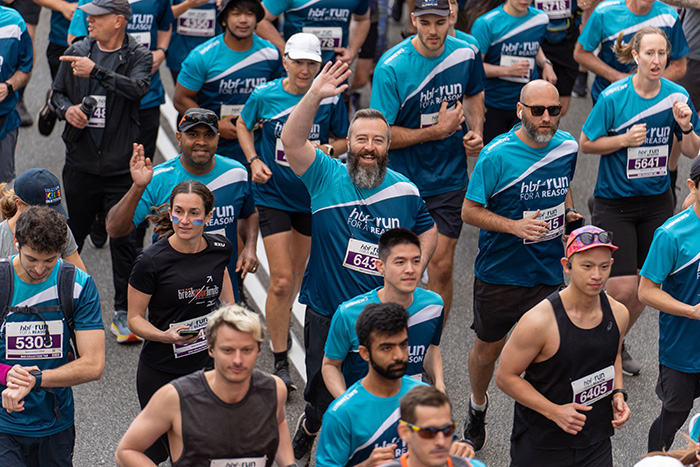- Home
- Training tips
- How to create a training playlist with Brooks Running
How to create a training playlist with Brooks Running

Music and running are great mates. When you hit your stride running, your body releases helpful chemicals called endocannabinoids1, resulting in a possible rush of feel-good energy. This same, feel-good hormone may also be released when you hit your stride in a song2. You know, that bit of the song you look forward to screaming in your head (or out loud), the bit that makes you want to dance, or sing – or run up that hill!
With all these feel-good chemicals involved, it’s obvious why combining music and running may be hugely motivating, and memorable. The HBF Run for a Reason half marathon sponsor Brooks Running agrees, which is why they’re here to talk more about creating the perfect running playlist.
First things first.
What makes the best running playlist?
The ideal running playlists have an upbeat tempo of around 120 - 150 beats per minute, motivating lyrics, and, most importantly, songs you love. Here's how to create yours.
Need some inspiration? Here’s a playlist we prepared earlier.
Tempo – or beats per minute
The reason tempo is important in your chosen running songs, is because it comes down to running cadence — which is how often your feet hit the ground when running.
Many running coaches recommend for the fastest form, everyday athletes take between 150 and 180 steps per minute, which is 75 to 90 per leg. While this is more of a generality than a rule — your ideal running cadence depends on factors like your height and leg length — it's why, if you search for "running playlists," the songs you'll get will be mostly fast-paced, or more specifically - 150 or more beats per minute.
The idea behind this is that, when running, you unconsciously time your foot strikes with the beat of the music you're listening to.
But the benefits of fast-paced music may extend beyond foot strikes. In a Psychology of Sport and Exercise study, researchers had runners sprint under three different conditions: while listening to "motivational" music with more than 120 beats per minute, while listening to a podcast, and without anything to listen to.
When people sprinted to upbeat music, their heart rates and speeds were higher than when they listened to a podcast or nothing. While researchers note that this was during sprints rather than long, slow runs, it gives some credence to beat-heavy running playlists.
Lyrics
For some, hearing motivational messages of strength and perseverance through the voice of, for example, Katy Perry, may improve your confidence that you can crush the challenge in front of you.
Researchers have been exploring and explaining that a feeling of self-efficacy may be central to a person's motivation, and most importantly, motivation over the long term3.
Preference
Even if a song's beats and lyrics are on point, if you don't like the sound of an artist or a particular song, it's not going to get you up the hill —for a song to move you, it has to move you.
How to create your running playlists
So, if the perfect playlist comes down to beats, lyrics, and preference, that's where you need to start in crafting yours. The easiest way is to start with preference. What music are you listening to a lot right now, check out your most liked songs on your listening platform and explore artists and songs similar to those you like – the Spotify radio function can help you do this, by giving you songs like the ones you already listen to.
As you go through them, think through beats and lyrics. If a song has a fast beat, one that makes you really want to nod, tap your foot, or dance around, this could be one for the list. If the lyrics make you feel like you could do anything, add it.
Most listening platforms allow you to add your favourite songs to a personalised playlist, allowing you to easily hit play on all your favourite songs next time you head off on a run.
Time to put it to the test
Training for the Brooks Half Marathon? You’ll need around two hours of music on the ready.
Now give your new playlist a listen. How do the songs feel? What’s the order like? Maybe you want a slightly slower tempo for warming up or cooling down.
Take your playlist for a test run and adjust things from there. Let your playlist evolve over time as you hear or love new songs.
A note on running with music
Ideally, when running, you should always be able to hear what is going on around you. When running outside near traffic or around others, limiting your music by playing through only one earbud, or keeping your volume low can help minimise any safety risks.
HBF Run for a Reason is jammed packed with entertainment, with music blasting throughout each course to keep participants motivated and moving– so we have you covered if listening to music on a run isn't your jam! Click here to enter!
Sources
- National Library of Medicine - The Endocannabinoid System and Physical Exercise
- National Library of Medicine - An Analysis of Endocannabinoid Concentrations and Mood Following Singing and Exercise in Healthy Volunteers
- Science Direct - Self-Efficacy Theory
